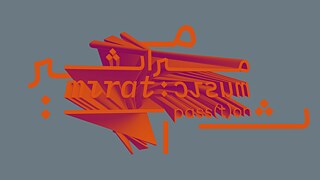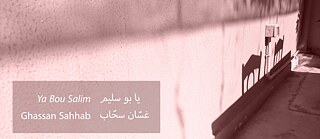Mirath:Music – Classical and popular Levantine music
Ya Bou Salim
A convergence between popular and classical genres, Ghassan Sahhab, a researcher specialized in classical Levantine music, attempts to find a common canal between the simple compositions of popular/folk music and the complex many layered classical music. “Ya Bou Salim” is a journey of similarities and contrasts beautifully composed in one musical piece.
CHARACTERISTICS OF POPULAR VS CLASSICAL LEVANTINE MUSICAL GENRES
The popular music is based on a simple and repetitive melody, a simple musical form, rhythms based on the cycle of simple poetry and not complicated lyrics, improvisation, and finally, the maqām system. In contrast, classical music is based on a complex and developed melody, complex musical forms, rhythms based on the cycle of poetry, complexity in the meanings of the lyrics, improvisation, and finally, the maqām system. When comparing these two genres, the common aspects between popular/folk and classical forms are:- The performance is based on improvisation (in its different types).
- The cycle rhythms are based on the poetry rhythm.
- Both genres are based on the maqām system.
The concept
Based on the observation mentioned above and the characteristics of the two genres, I am questioning if there can be a common canal, within the same musical piece, in which we can propose a convergence between popular and classical genres.Background of the concept
In 2019 I started working as a musical director on the album of al-Manfiyyin band in collaboration with Me’zaf; (the album will be released in 2021). The project is based on recording and documenting oral musical tradition of the Levant that is memorized by older generations. When the recordings were done, I contributed to the classification of the material according to the maqām and the topic of the songs and to the selection of songs that would be included in the Album. Although the material we received was recorded as vocal only (without any accompanying instrument) and was performed by amateurs, I couldn’t but notice the variety and richness of these melodies and of the cycles of their poetry.THE CHOICE OF THE MELODY
For the cultural heritage project “Mirath:Music” I chose a melody that was recorded for al-Manfiyyin project and wasn’t included in their album. I chose the melody of a song called Sameh Ya Bou Salim. It is on Sikah maqām and based on a 9 beats cycle. This song is one of many songs that are chanted in marriage ceremonies in the Levant specifically in Palestine.THE PROCESS
Ya Bou Salim, the convergence between popular and classical genres.THE RHYTHMIC PART
The 9 beats per cycle was a convenient starting point. In classical music, the rhythm used in this cycle is usually called aqṣāq (means lop-sided, from the Ottoman language) and it includes the following beats: D S T S D S T S T[1]. However, playing the aqṣāq rhythm doesn’t sound suitable with the accents of the song’s lyrics. Also, the song gives in its beats the feeling of dabke, which is the collective popular dance practiced and performed in the Levant. The dabke cycles are usually with 2, 4 or 6 beats.The challenge was to find a rhythm that preserves the dabke feeling and the aqṣāq cycle at the same time. Following these criteria, and following the accents of the lyrics, the result was to create a dabke rhythm on a 9 beats’ cycle. The rhythm I created was: td st ds ts ds td st dd ts[2] to which I propose the name atakofti aqṣāq. The katakofti, being one of the rhythms that are used in dabke songs and that is based on 4 beats per cycle. It has the following structure: td st ds ts. So, the new rhythm I propose is based on 9 beats, whereby the katakofti pattern (of 4 beats) is present in the first 4 and last 4 beats.
THE MUSICAL FORM
As for the musical form, the original song consists of a repetitive phrase which is based on the form of taqtuqa[3]. In order to meet the criteria of the forms in classical music, I had to elaborate a development and a variation on the initial melody. I composed an introduction which was followed by the initial melody that became the core of the progression on which Mustafa Said and I added the taqsīm[4 on the ‘ūd and the qānūn instruments.This new form met the form of taḥmīla, which is a form based on a composed melody, followed by a progression over which the musicians add their taqsīm. The taḥmīla in itself comes from a popular Egyptian form that used to be performed in wedding ceremonies. It slowly merged to become a classical form in the 19th century that used to be recorded in Egypt and then the Levant.
[1] The D is for Dum which is the heavy beat, the T is for the Tak which is the weak beat and the S is for the
silence. The beats are having the same value which could be the 1/4 note or the 1/8 note.
[2] Each 2 beats are considered in one pulse, so eighth note for every one of them.
[3] A basic vocal form based on chorus and verse.
[4] A form of improvisation used in the maqām music
Credits
Mixing: Nabil Abdul Khalek
Photos and visual: Areej Abou Harb
‘ūd: Mustafa Said

